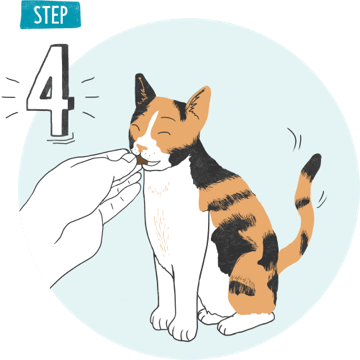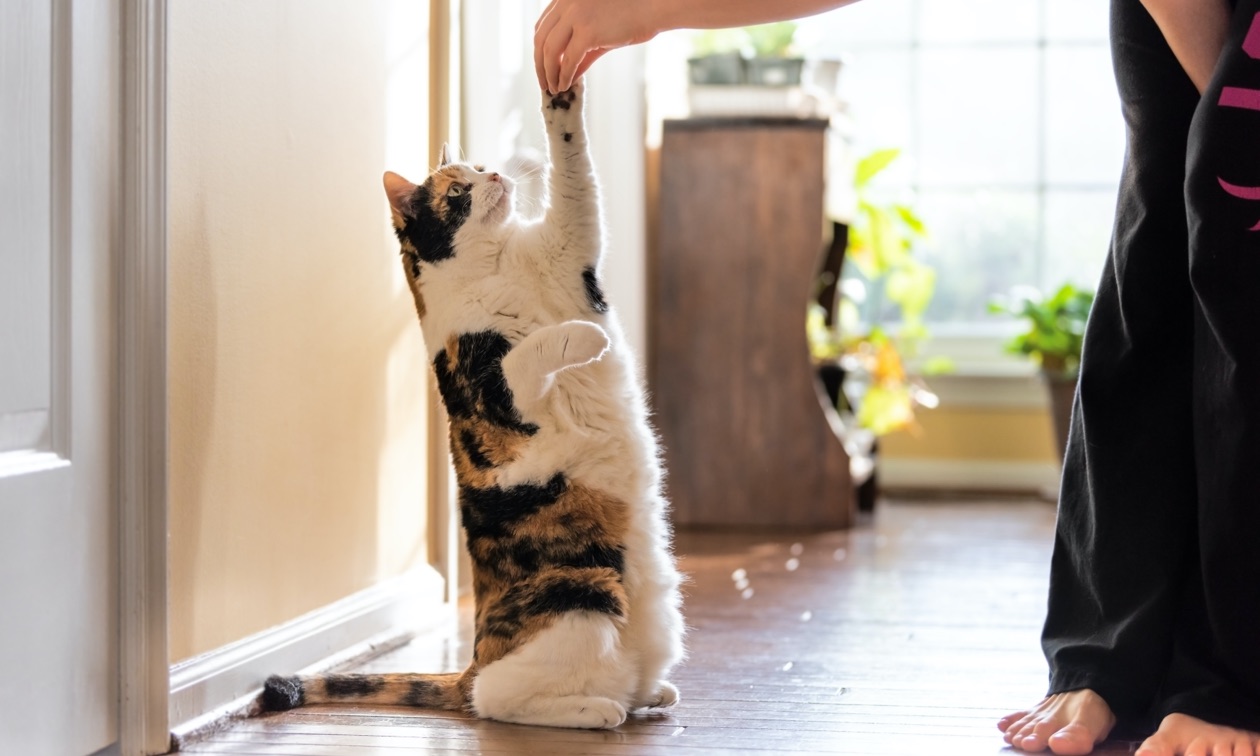Cats are smart creatures, but the long-standing myth is that you can’t train them. If you think about it, cats clearly “get” training — they’ve done a great job of training us to feed them and scoop their litter boxes. The good news is that it can work in reverse, too. Cats can be trained to do the things we want them to do. Training your cat will help you prevent unwanted behaviors, and it’s a great way to provide mental enrichment. It just takes a bit of time (and a lot of treats)!
Why Should You Train Your Cat
Whether using a click-and-reward system or other positive reinforcement, training has incredible benefits for cats, including:
Building the bond between you and your cat.
- Mental enrichment, which can be a lifesaver if you have a very high-energy cat.
- Preventing boredom which helps managinge unwanted behaviors like scratching furniture and getting into cabinets.
- Making cooperative care, like nail trimming and giving medications, easier on you and your cat.
- Helping to control general anxiety, especially in stressful situations.
- Building your cat’s confidence.
- Replacing physical activity with mental enrichment for senior cats or those with limited mobility.
Just a few minutes of training every day to every few days is all it takes to see the benefits of training with your cat.
At What Age Can You Train Your Cat?
Cats of any age can start training. You just have to match the behavior with their mobility and energy level. A senior cat may be unable to sit on their back legs for an “up” cue, but maybe they can raise a paw for a fist bump or touch a target with their nose. So, don’t let your cat’s age or lack of previous training stop you – it’s never too late. Just talk to your veterinarian about where your cat may have limitations with mobility.
Whether you have a purebred or a mixed-breed cat, consider learning about training and starting a regular training program with your cat. It’s one of the best things you can do for them and it will be so much fun for you too.
How Is Training a Cat Different Than Training a Dog?
Training a cat is not much different than training a dog. By using positive reinforcement training, you’re simply looking for what your cat finds motivating and what they’ll work for. For many cats, this will likely be treats in the form of food, but some cats find play or praise incredibly motivating. It all depends on the cat! Clicker training, commonly used in training a wide range of animals, is highly effective when working with domestic cats too.
How Do I Train My Cat?
You can use your voice or a clicker combined with treats to reinforce good behavior. You’ll either click or say “yes” as soon as they do the behavior you want them to do. The sound is “marking” the exact moment they got the behavior and gives them a clear understanding of what you’re expecting them to do. (When choosing a marker word, pick one that you don’t use in other contexts, such as when you’re praising them.) Then follow up immediately with a treat. To make marker training more effective, the click or word must always be followed by a treat — your cat learns by association, so the marker needs to be consistent to build motivation and provide clear communication when they do something right.

Start by grabbing your cat's favorite treat (or toy) in your hand and call them to you.




Repeat until your cat responds to the sit cue without holding a treat above their head.
You can also train your cat to come, shake, lay down, or go to a certain place.
Besides training your cat to do tricks, you can also use positive reinforcement training to redirect them from naughty behaviors, like meowing at 4 am or using your new couch as a scratching post. The goal here is to teach your cat behaviors that they can do instead of the unwanted behavior, along with managing their environment so they aren’t able to practice the bad behavior. There are cat trainers, behavior consultants, and even YouTube videos that can help you teach your cat more appropriate behaviors using positive reinforcement.
Benefits of Training Your Cat
Training is beneficial for your cat because it provides needed social and environmental enrichment and strengthens their bond with you. It also helps to prevent boredom so they can stay out of trouble and live happy, healthy lives.
ZPC-00324R1



